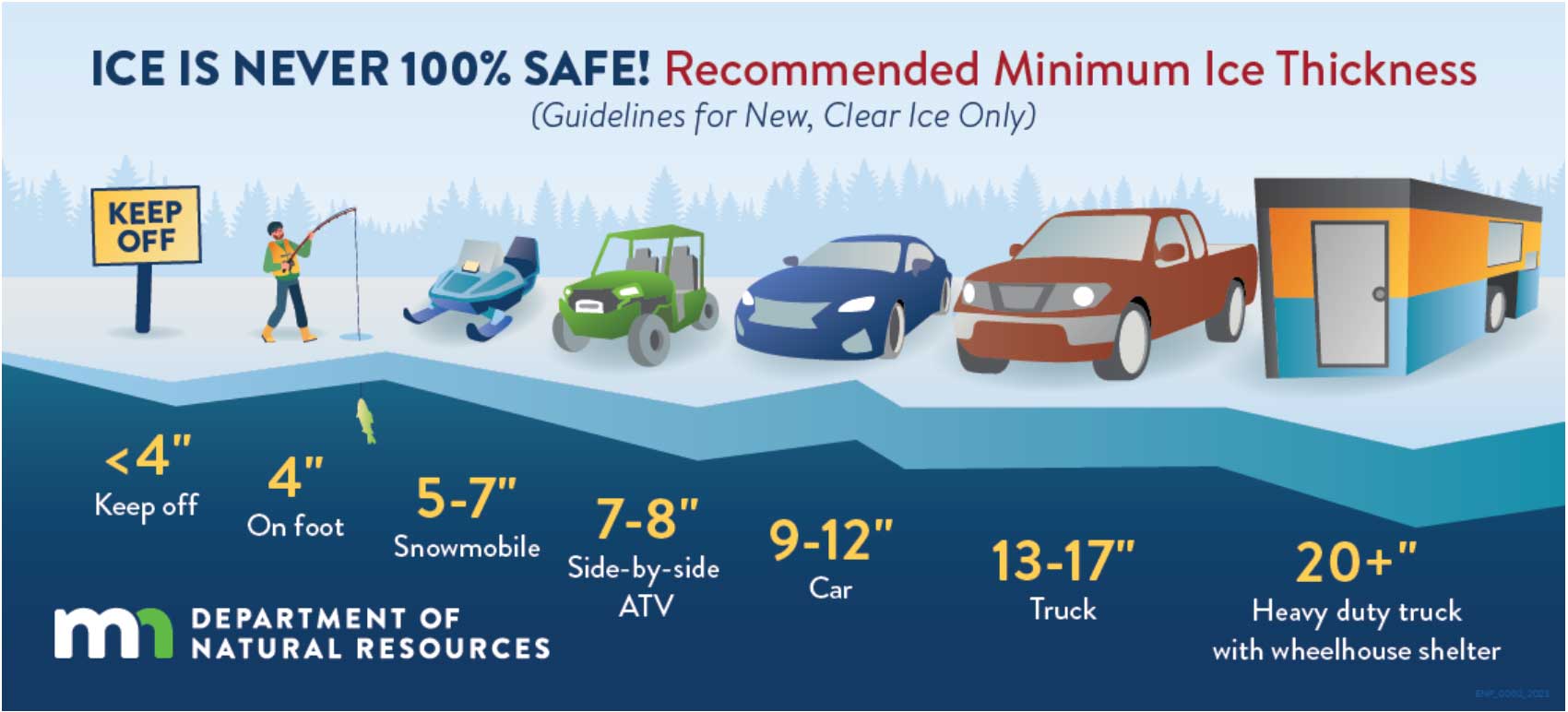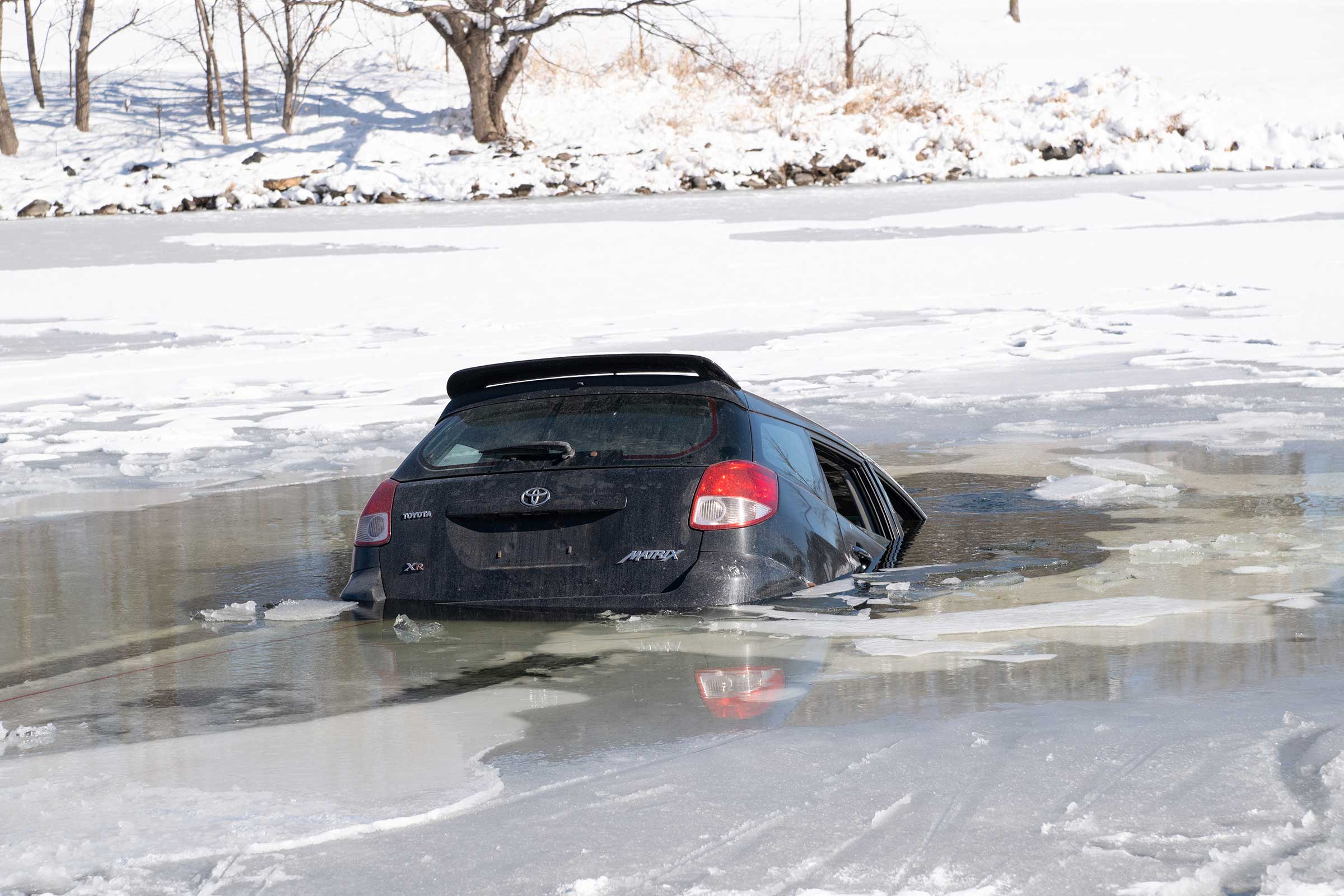Ice Safety – Danger Thin Ice
By Nicole Biagi, Minnesota DNR Ice Safety Coordinator
It has been a particularly deadly winter season on Minnesota waters, with at least four people dead after falling through the ice. While some lakes are largely ice-free, people are still ice fishing on others, particularly those in the north.
The late-ice season can be particularly dangerous and in recent days, Minnesota Department of Natural Resources conservation officers have received numerous reports of vehicles falling through thin ice.
No matter how people choose to drive on the ice, whether in a motor vehicle or on a recreational vehicle, they should check the thickness frequently. Ice is never 100% safe. Follow DNR ice thickness recommendations. Always double the recommendations when traveling on white ice. Have safety gear, including ice picks and a life jacket or float coat, easily accessible. Do not wear buoyant gear in an enclosed vehicle as it can make escape from a sinking vehicle very difficult. Roll down the windows and unlock the doors.
If a vehicle plunges through the ice, the best time to escape is before it sinks. It will stay afloat a few seconds to several minutes. While the car is still afloat, the best escape hatches are the side windows, since the doors might be held shut by the water pressure. If the windows are blocked, use an emergency safety tool, like a spring-loaded emergency hammer or an object from inside the vehicle to break the glass.
Depending on the conditions, it can cost several thousand dollars or more to remove a vehicle that’s broken through the ice. It often takes specialized equipment. If a vehicle breaks through the ice, state statute requires the owner of the vehicle report the date and the circumstances surrounding the submergence to the sheriff of the county where the body of water is located within 48 hours of the vehicle entering the water. Removal must be completed within 30 days of the vehicle entering the water or being discovered in the water. The owner of the vehicle is subject to a civil penalty of not less than twice nor more than five times the costs incurred by the political subdivision to remove, process, and dispose of the vehicle.
There really is no sure answer as to when the ice is safe. You can’t judge the strength of ice just by its appearance, age, thickness, temperature, or whether or not the ice is covered with snow. Strength is based on all these factors – plus the depth of water under the ice, size of the water body, water chemistry and currents, the distribution of the load on the ice, and local climatic conditions.
For more information on ice safety contact the MN DNR and ask for our free ice safety publications, which include the brochures, “Danger, Thin Ice” and “Cold Water Kills” and the wallet-sized reference card. Metro 651-296-6157 or toll free outside the metro area 888-646-6367.
Images Courtesy Minnesota Department of Natural Resources

















